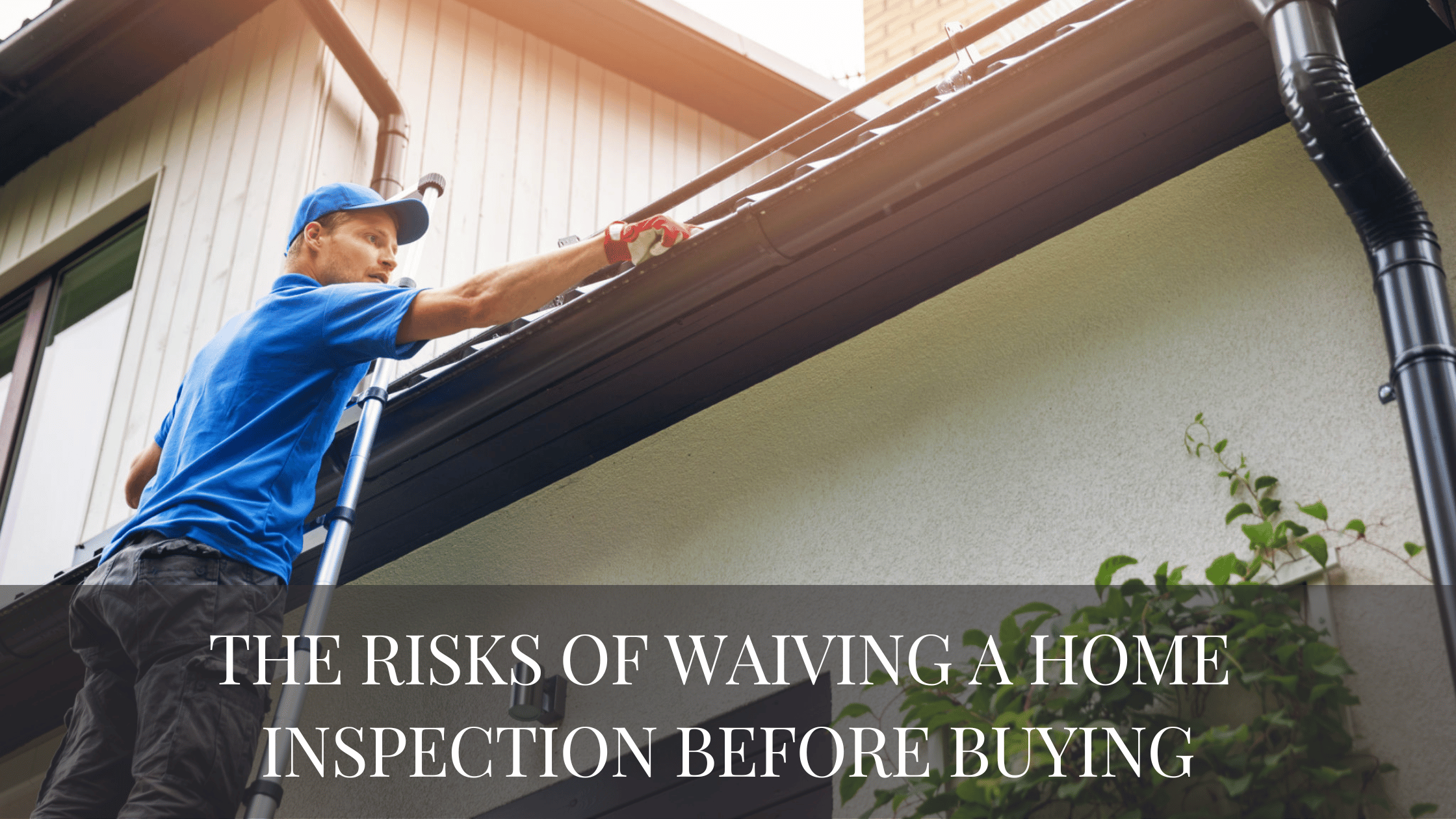Creating Serenity at Home: Tapping Into Your 5 Senses

In our fast-paced world, finding peace and tranquility in our living spaces is more important than ever. A serene home environment can provide a sanctuary where we can unwind, recharge, and find solace. By engaging our five senses—sight, hearing, smell, taste, and touch—we can create a harmonious atmosphere that nurtures our well-being.
The 5 Senses And Their Impact On Peace At Home
Our senses play a crucial role in how we experience the world around us. When harnessed intentionally, they can transform our homes into havens of tranquility. Sight, hearing, smell, taste, and touch all contribute to our overall sense of well-being. Let’s delve into each sense and discover how to leverage it to create a peaceful ambiance at home.
Sight: Creating A Visually Soothing Environment
Visual aesthetics have a profound impact on our mood and stress levels. By incorporating calming visual elements, we can foster a sense of tranquility in our living spaces. Consider decluttering, using a soothing color palette, and integrating natural elements such as plants and natural light to create an environment that promotes relaxation.
Hearing: Cultivating A Serene Soundscape
Sound can profoundly influence our emotions and relaxation. To create a peaceful auditory environment, eliminate or minimize disruptive noises, embrace soothing sounds like gentle music or nature sounds, and strategically place soft furnishings to absorb excess noise.
Smell: Harnessing The Power Of Aromatherapy
Scents have the remarkable ability to evoke emotions and trigger relaxation. By incorporating aromatherapy into your home, you can create a serene atmosphere. Experiment with essential oils, scented candles, or natural fragrances like lavender or eucalyptus to infuse your space with a calming aroma.
Taste: Nourishing The Body And Soul
Food and comfort are deeply intertwined. By practicing mindful eating and cultivating a space that honors nourishment, you can enhance the peacefulness of your home. Designate a cozy dining area, experiment with soothing herbal teas, and create a kitchen that encourages mindful cooking and eating experiences.
Touch: Embracing Tactile Comfort
Physical touch plays a vital role in creating a calming environment. Incorporate tactile elements into your home, such as soft fabrics, plush rugs, and comfortable furniture. Create cozy reading nooks, indulge in luxurious bedding, and incorporate textures that invite relaxation and comfort.
Create Your Own Serenity
A peaceful home is within reach when we tap into our five senses and intentionally design our living spaces to foster tranquility.
Whether you are looking to create a serene environment for yourself or attract buyers to a property, these principles can be applied to enhance well-being and elevate the overall experience of your home. Start by incorporating a few simple changes and notice how your space transforms into a sanctuary of peace.
If you’re seeking expert guidance or assistance in finding your dream home, don’t hesitate to reach out. As an experienced real estate professional, I am here to help you navigate the journey to finding your perfect sanctuary. Contact me today to take the first step toward a more serene living space.
7 Ways To Keep Pests Away from Your Outdoor Space

With the warm weather rolling in, it’s time to start spending more time outdoors. Whether you’re enjoying a meal with family and friends or lounging by the pool, the last thing you want is for pesky bugs to ruin your fun. Luckily, with a few simple steps and precautions, you can keep away unwanted critters and enjoy your outdoor space all summer long!
Remove Standing Water
Standing water offers an ideal breeding ground for many insects, so be sure to empty any buckets, bird baths, tires, and other objects that may contain water. If you have a pond or pool on your property, adding fish will help control larvae levels.
Keep Larvae Out of Water Features
If you have fish ponds or fountains on your property, make sure they’re treated with larvacides to reduce the number of mosquitoes in the area. You should also check any pools or spas that are not treated with chlorine regularly; larvae grow quickly in these environments and must be controlled effectively.
Invest in Mosquito Nets to Ensure Optimal Health and Safety
Installing mosquito nets around areas where people gather can help keep out flying insects like flies and mosquitoes. Look for ones that are specifically designed to keep out pests while still allowing fresh air to flow through freely; this will help ensure a comfortable atmosphere while keeping bugs away from humans.
Install Outdoor Ceiling Fans
Installing ceiling fans outside can help create a breeze that keeps bugs away from people gathered outdoors. This is especially useful when there isn’t much natural wind; the fan will create enough air circulation to keep pests at bay without making it uncomfortable for those enjoying some outdoor time.
Be Prepared with Bug Repellent
Having bug repellent handy is always a good idea; it’s a quick way of getting rid of any annoying buzzing pests without having to resort to chemical sprays that could potentially harm other living creatures in the area (including us!). Consider using natural repellents such as essential oils mixed with water for added protection against bugs without risking potential health hazards caused by aerosol sprays.
Store Cushions Indoors
Kick back and relax on an outdoor sofa without fear of creepy crawlies! To ensure that mosquitoes—as well as spiders, ants, or earwigs—don’t join your party, you should take a few moments to bring cushions and throw blankets indoors when you’re done. Enjoy the summer days worry-free and in peace!
Burn Citronella Candles
Citronella candles are a great way to keep mosquitoes at bay while creating a welcoming atmosphere during outdoor gatherings. The candles provide just enough light and scent without overpowering everything else around them—plus they look lovely too!
Enjoy the Outdoors Insect-Free
When it comes to creating an outdoor space that’s pest-free, prevention is key. A combination of these tactics can help you keep annoying bugs away so you can kick back and enjoy your outdoor space. With some preparation and forethought, you can balance each of these techniques to make sure your outdoor living area remains enjoyable all summer long. So craft your ideal combination of preventative measures today for a pest-free tomorrow: You deserve a peaceful summer season!
How to Keep Your Life Together While Your Home is in Limbo

Selling your home can be an exciting time, but it can also be stressful. After all, when you have prospective buyers coming to view your home, you have to make sure that it looks perfect at all times. That means making sure that it is always clean and tidy and that any mess is tucked away out of sight. But while this may sound like a lot of work, don’t worry – there are some tips and tricks that you can use to make the process easier and help you live a (semi-)normal life while your home is being shown.
Make a Pre-Showing Checklist
When selling a house, preparing for showings is essential for making sure potential buyers are left with a good impression. One key way to ensure that all necessary tasks are completed before showings is to create a pre-showing checklist. This list should include simple tasks such as taking out the trash, wiping down surfaces, putting away clutter, and laundering bedding or towels if needed. Writing down all of the steps makes it much easier to remember everything that needs attention in order to give viewers the best look and feel possible. Doing so will not only help your house sell faster but will also make sure you don’t forget the little things in the rush of getting ready for a showing.
Make Your Bed as Soon as You Wake Up
Starting the day off right usually means having a plan and sticking to it, and making your bed as soon as you wake up can be part of that plan. By making a little effort to tidy up your room each day, you can start out with peace of mind knowing your bedroom looks well-ordered. Additionally, should an unexpected home showing appear without prior warning, you can simply fluff the pillows and make sure everything looks presentable in mere moments!
Hide Laundry in a Lidded Hamper
A lidded hamper is the perfect way to keep unsightly laundry out of sight when it comes to staging your bedroom for sale. When you are getting ready to welcome prospective buyers, you don’t want them to be greeted with an open hamper filled with wrinkled linens. An aesthetically appealing lidded hamper offers a stylish solution that will not only help you retain potential buyers’ attention and prevent unfavorable first impressions but also provide practical storage space for everything from heavy-duty comforters to light towels and delicates. Investing in a chic, lidded hamper is definitely worth it for the extra layer of tidiness your bedroom needs.
Put Nightstand Drawers To Work
In order to keep a room looking neat and tidy, it is important to clear away the odds and ends that accumulate around the nightstand. A few simple steps can help ensure clutter isn’t left on display. After making your bed and freshening up the area, place items such as magazines and jewelry out of sight. If your nightstand lacks drawers, use a lidded box to store the items under the bed or on top of your dresser for when you need them in the future. Keeping these essentials tucked away between uses gives your bedroom an immediately more calming appearance.
Stash Cleaning Wipes in the Bathroom
If a last-minute showing pops up with little advance notice, cleaning wipes will come in handy! Stash some in each bathroom so dirt or smudges can be quickly wiped away without having to grab cleaning supplies from elsewhere in the house.
Stay Sane While Selling Your Home
Staying on top of your home while it is in limbo is an admirable lifestyle choice. Don’t let your day-to-day life be disrupted by the chaos that comes with selling or renting a new home; use the tips provided here to help keep your space clean and clutter-free so that you can remain stress-free. A little extra effort goes a long way when it comes to keeping your home organized while it’s listed for sale! Keeping these tips in mind will not only help you stay sane throughout the transition but also help you make a great first impression on potential buyers.
Keep Your Pets Safe When Disaster Strikes

Emergencies can range from small inconveniences to life-threatening situations. But no matter the size or type of emergency, one thing is certain: You need to be prepared. This is especially true if you have pets. Keeping them safe in an emergency means having a plan and being proactive. This blog post will offer tips on how you can keep your pet safe in the event of an emergency.
Get Ahead of Disasters Before They Strike
Planning ahead for your pets is a must to give them the best chance in case of disaster or emergency. Prior to any potential need, make sure all animals are microchipped and have ID on their collar with your up-to-date contact information. It is also important to have records of current vaccines as well as a list of pet boarding facilities / veterinarian offices available with 24-hour phone numbers in the event you need to evacuate. Reach out ahead of time to hotels and motels within your vicinity to learn ahead of time what your options are if needed. Lastly, it’s wise to provide a key to a reliable neighbor, friend, or family member who can come get your pet(s) should you be unable to do so yourself.
Essential Items for Your Emergency Kit
When it comes to being prepared for natural disasters, don’t forget about your pets! It’s important to have a disaster kit that includes all the necessary items that you’ll need in an emergency. You should have food and water for at least five days for each pet, as well as bowls and a manual can opener if you are packing canned pet food. Additionally, be sure to have medications and medical records stored in a waterproof container. A pet first aid kit is also essential since it contains various items that may come in handy for treating injuries or illnesses. Lastly, you will want sturdy leashes, harnesses, secure carriers, photos of you with your pets, written information about their feeding schedules and behaviors, and even a favorite toy to comfort the pets in case of an emergency.
Pets in Your Evacuation Plan
When making evacuation plans, don’t forget to include your pets! It is crucial that they are evacuated along with other family members, as leaving the pets behind can put them at risk of injury, loss, or even death due to dangerous conditions. Without you there to supervise the pets, you have no idea how long it may be until you can return for them. This is especially true during natural disasters and emergencies. Even animals like feral or outdoor cats, horses, and animals on farms must be considered when making plans—if possible, evacuate these animals as well so that their safety is ensured. Ultimately, if a situation isn’t safe for you, the same goes for your pets; make sure that all your furry family members make it out in one piece!
Creating a Safe Haven
Staying home during a storm or other disaster can be dangerous. For the safety of your family and pets, it’s important to identify a safe area of your home and pre-prepare it in advance. Store your emergency supplies and medications, as well as pet food and water, in watertight containers. Have a crate ready for each pet. In addition, close off or eliminate any unsafe nooks and crannies that may have been previously accessible, and move any dangerous items out of the room. By doing these steps ahead of time, you can create an environment in which your family and pets can wait out the danger safely.
Taking Measures to Protect Your Pets During Wildfire Seasons
With an ever-increasing rate of wildfires, it’s more important than ever to properly monitor and care for your pets during these hazardous times. It’s important to be aware of air quality in your area as well as stay up to date on evacuation alerts so that you’re prepared in case you need to leave quickly. Meanwhile, pets should remain indoors with the windows closed. To ensure their safety, you should avoid outdoor exercise. Wildfire smoke could have a bigger impact on already ill or elderly animals with heart and lung illnesses. Pay attention to your beloved pet companions during such times to make sure they remain healthy and safe.
Keeping Pets Safe in Post-Emergency Conditions
After an emergency, the environment of your home may be vastly different than before. It can be difficult for both you and your pets to navigate such a change, so keep them safe by keeping dogs on leashes and cats in carriers when assessing the damage around your home. Remember to stay patient with them throughout this process, as they might also be confused and scared. Additionally, if you find that any wildlife has fled to your home as a result of the disaster, contact your local animal shelter for assistance and advice. While navigating any unknown changes in our familiar environment can be daunting, bringing proper care to all animals involved will help us return to normalcy more quickly.
Home Equity Loans: What to Do and What Not to Do

Home equity loans are a smart way to access the value of your home in order to finance various needs. It is important to understand what you can use the loans for, as well as what you should avoid. Here we will discuss the dos and don’ts of home equity loans so you can make an informed decision about if and when it’s right for you.
Do Use Home Equity for Improvements or Additions That Add Value to Your Home
Investing in your home is always a good idea, especially if you plan on staying in the house for a long time. You may want to renovate your kitchen or add a garage or bedroom addition – these are all improvements that may increase your home’s value, making it a smart move from both an investment and financial standpoint.
Do Consider Using It to Cover Expenses from Unexpected Events
Unexpected events, like medical bills or job losses, can cause serious financial hardship. If this happens, tapping into your home equity can be a great way to cover those expenses without having to get into debt with high-interest credit cards or personal loans.
Do Consider Tapping into It for Use in Retirement
Retiring on social security alone isn’t always enough, particularly if you have other large expenses, such as medical costs that need coverage. Tapping into your home equity is one way seniors can supplement their retirement income without having to take on additional debt.
Don’t Use Home Equity to Purchase Unnecessary Luxuries
While taking out a loan against the value of your home might seem like “free money,” – it isn’t! Taking out more than you need could cost you significantly more money over time in terms of interest payments and fees associated with the loan. So, resist the urge to use it for expensive trips or other luxuries that won’t add any value to your life in the long run.
Don’t Tap Home Equity if You Plan to Sell in the Near Future
Selling too soon after taking out a loan against your home could mean that you end up owing more than what the house is worth at closing time since many lenders require repayment within 90 days of the sale. So if there’s even a remote chance that you’ll be selling soon, consider another option before taking out a home equity loan.
Don’t Take Out Excessive Equity
Taking out too much equity could leave you unable to make monthly payments, which means risking foreclosure and damage to your credit score. Make sure whatever amount you borrow fits comfortably within your budget before signing any paperwork!
Conclusion
Home equity loans are an excellent option when used responsibly and strategically; however, they should not be taken lightly due to their potential consequences if not managed properly or used for ill-advised purposes such as purchasing unnecessary luxuries or covering short-term expenses that don’t truly add value long-term. When considering taking out a loan against the value of your home, always do extensive research and consider how it will affect both your current budget and future financial goals; this will help ensure that any decision regarding using home equity is made carefully and thoughtfully – ultimately leading towards greater financial stability!
The 6 Expenses Homeowners Pay That Renters Don’t

Are you considering making the transition from renting to owning a home? Most people know that there are monthly expenses associated with owning a home, but too often, these homeowners-only costs are overlooked in the excitement of finally getting into your dream house. Don’t find yourself in a financial pinch when it comes time to pay those unexpected homeownership bills! Read on as we explore six expenses commonly incurred by homeowners that renters never have to worry about.
Property Taxes
Property taxes are an annual expense that all homeowners must pay. These taxes help fund local schools, public safety services, and infrastructure improvements in your community. Property taxes vary widely depending on the area you live in; they are typically higher in more populous cities or suburbs. On the other hand, renters do not have to pay property tax directly since their landlord is responsible for it.
Mortgage Interest
Most people need to take out a loan when they buy a house. When you take out a loan on your home purchase, you will most likely be required to make monthly payments of principal and interest. The interest rate on the loan will determine how much money you will have to pay each month, so it pays to shop around for the best rates before taking out a loan. On the flip side, renters don’t have to worry about making these monthly payments since their landlords bear this burden instead.
Home Insurance
Home insurance is another expense that comes with being a homeowner that renters don’t have to worry about paying directly. Homeowners insurance covers damage from natural disasters like tornadoes or hurricanes as well as theft or vandalism of your property due to certain perils such as fire or smoke damage. It also includes liability coverage for any accidents that might happen on your premises. Renters may not be required by law to carry their own insurance policy, but most landlords require tenants to carry renter’s insurance policies as part of their lease agreement in order to protect their investment in case of an accident or disaster occurring within the rental unit itself.
Maintenance & Repairs
As a homeowner, you are responsible for all repairs and maintenance needed inside and outside your home—from fixing broken windows and plumbing issues to mowing the lawn and painting walls when necessary—all of which can add up quickly over time if left unchecked! Renters do not incur these costs since their landlord is usually responsible for taking care of these tasks unless otherwise specified in the lease agreement (e.g., requiring tenants to perform regular yard maintenance).
Real Estate & Legal Fees
Real estate fees include closing costs (such as title search fees), transfer taxes (like stamp duty), and legal fees associated with purchasing real estate—all of which can add up quickly! Although some lenders may offer special deals where they cover some/all of these costs upfront (often included in what they call an “origination fee”), buyers should still expect some level of expense associated with purchasing real estate, even after securing financing from lenders. Renters do not incur any of these fees since they are usually paid by either the seller or lender at closing time when buying homes outright with cash via traditional contracts between buyers and sellers/lenders and borrowers, respectively.
HOA Fees
In addition to paying property tax and mortgage interest each year, many homeowners also have additional costs associated with belonging to a homeowner association (HOA), such as dues for the upkeep and maintenance of common areas and amenities shared among neighbors. These dues can range anywhere from $50–$200+ per month, depending on what kind of facilities are available within the neighborhood or community. Fortunately, though, renters do not usually need to worry about paying HOA fees since they typically only apply when one owns a property outright without having any form of leasing arrangement between them and their landlord(s).
Renting or Owning—Which is Right for You?
As a renter, you save money in the short term by not having to pay for some of these expenses. But as a homeowner, you eventually build up equity that can offer financial stability and security later on down the road—not to mention the satisfaction of knowing your home is entirely yours. Weighing all these factors will help you decide whether buying or renting makes more sense for you in the long run. And if you’re leaning toward homeownership but worried about affording it, contact me to learn about all your options.


 Facebook
Facebook
 Twitter
Twitter
 Pinterest
Pinterest
 Copy Link
Copy Link





